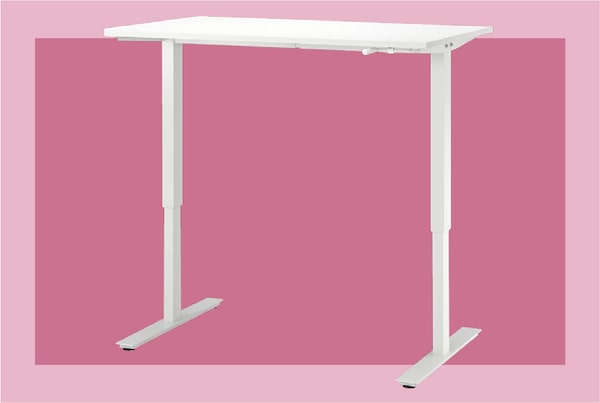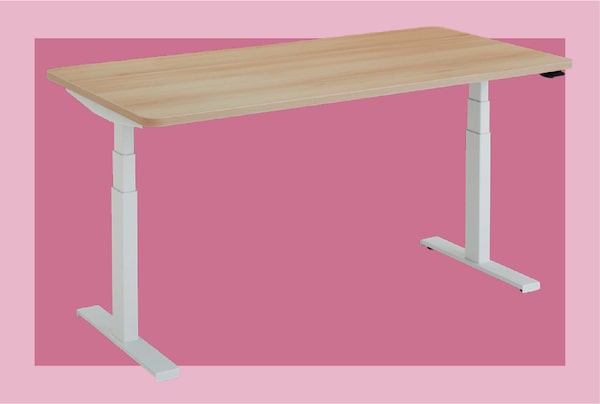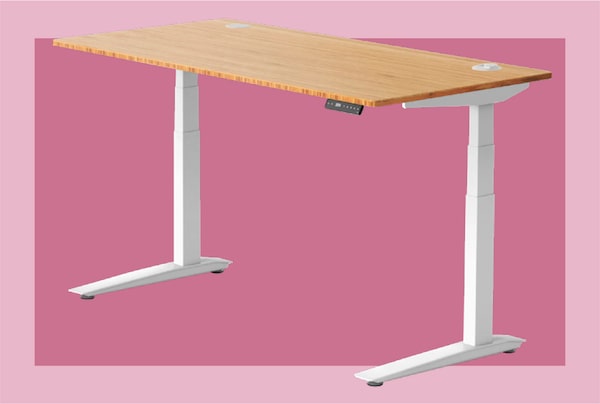Globe staffer Aruna Dutt is ready to upgrade her hand-me-down furniture for purchases that last. In this new shopping series, she asks experts to help her make buying decisions that are worth the investment.
If you started working from home at the beginning of the pandemic, you likely created a comfortable home office years ago, while I procrastinated on making the investment until earlier this year. I was still using a small desk I had bought on Amazon as a temporary fix, and it finally caught up with me. Extreme shoulder pain kicked in, and it was only after my chiropractor’s urging that I updated to a setup that didn’t leave me hunched, my arms dangling with no support.
If your office still isn’t ideal, workplace design specialist Beverly Horii can help. Horii, an award-winning managing director and principal at IA Interior Architects’ Toronto studio, has 32 years of design leadership behind her. She started advising clients and employees on how to create home offices during the pandemic, and has since helped corporations adapt to hybrid workplaces nationally, including Bank of Nova Scotia, CIBC, Autodesk and Torys. Here are her tips.
Desk sizing: “Our rule is 30 inches from front to back, which has enough room for monitors and laptop,” says Horii. “You can get away with 24 inches at home, but we don’t do that in a corporate setting since it’s not as comfortable.”
From there, consider where you’re putting it in your space. And you’ll need to consider what kind of work you do: If you need large or multiple monitors, you will need to size up.
To save, forget storage and aesthetics: “The minimum a work desk should cost is $200 to $300,” says Horii, noting that built-in storage will make the price higher. “I like the storage options to be separate, a little pedestal that you can tuck in underneath, or a wall-mount.” And desks without storage can be more multipurpose: “It can be up against a wall to put a statue or decor on,” says Horii, also noting that if the desk will be in your living room and you need it to look nice (think higher design and upgraded materials such as solid wood), it will likely cost more.
The standing-desk standard: “All of our employees have a sit-stand desk, even before the pandemic. We feel ergonomics are important. You should be moving up and down through the day.”
Materials: For a durable and sustainable pick, Horii recommends solid wood tops and veneers.
Test it in-store: “Whenever possible, try to view the product in person and kick the tires to test the mechanisms. See if it’s stable, and whether it will rock if you put heavy objects on it. And try the mechanisms. Some sit-stand features are noisy and you may not want that every time you raise and lower the desk. And make sure the desk is at the right height for you when standing.”
Go with an adjustable chair: “I usually consider desks and chairs together because they work as a pair,” says Horii. A chair that moves up and down as well is a good option. “In order to keyboard at desk height, I need to raise my chair. The arms should be 90 degrees, and the monitor should be at a height that is straight ahead, so you don’t need to tilt your head. My feet start to dangle so I use foot stool. You might need a monitor and a laptop stand, and a separate keyboard tray.”
A good desk isn’t everything: “You have to change position through the day, and moving to the dinner table, the couch or another position is the best thing to do. Same with in the office, you should move from your ergonomic space to a meeting room or couch, which gives you a different posture.”
Here are Horii’s stand-up desk picks in three price points
Cost to deliver is not included in prices.

Trotten sit/stand desk in all white, $299 at Ikea.Supplied/Supplied
The Budget
Trotten sit/stand desk in all white, $299 at Ikea (ikea.ca)
This desk has a particle board tabletop, and can be adjusted between a height of 27½ inches and 47¼ inches.
“It’s a simple and discreet desk with a hand crank to lift and lower. It comes in a variety of sizes and does not need to be located near a power source. Also, the storage is sold separately so that if you want to use the desk for another purpose, you can!”

Solo Sit-to-Stand desk, $849 at Steelcase.Supplied/Supplied
The Best Bang for your Buck
Solo Sit-to-Stand desk, $849 at Steelcase (steelcase.com)
This desk has a laminate finish tabletop and a controller to adjust the height between 22.6 inches and 48.7 inches.
“Many of the major commercial furniture manufacturers – Teknion, Haworth, MillerKnoll and Steelcase – have online home office offerings. These companies know how to produce quality products for rigorous testing in the commercial market. Steelcase produces the Solo Sit-to-Stand desk specifically to the consumer market. It is stable, has a generous work surface and is easy to assemble.”

Jarvis Bamboo Standing Desk, $1,330 at Herman Miller.Supplied/Supplied
The Splurge
Jarvis Bamboo Standing Desk, $1,330 at Herman Miller (hermanmiller.com)
This electric desk has a tabletop made of bamboo, which gives off warmth, and has three height levels to choose from, making for a quality sit-stand mechanism, says Horii.